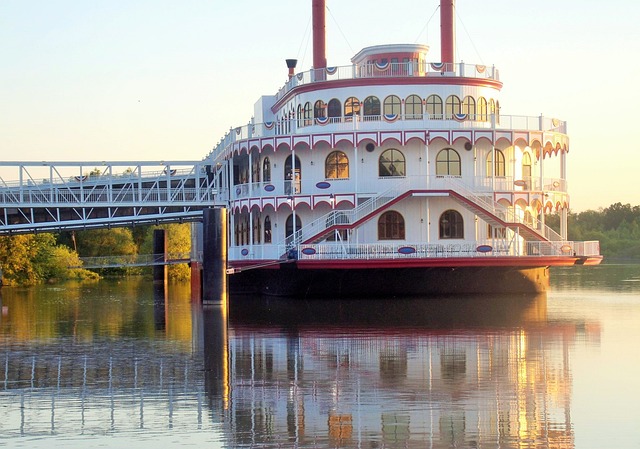Brick and mortar casinos, historically social hubs offering gaming and entertainment, have evolved into luxurious destinations featuring advanced technology, lavish interiors, and diverse gaming options. While facing competition from online alternatives, these venues adapt by integrating digital elements and creating unique atmospheres to attract a changing market of patrons seeking both authentic casino experiences and cutting-edge amenities.
In the realm of gambling, brick-and-mortar casinos have long dominated the landscape, evolving from humble beginnings to vibrant, bustling hubs of excitement. This article explores the evolution of these traditional gaming establishments, highlighting their key features and attractions that continue to draw folks in. We also delve into the challenges they face in today’s digital era and the rise of online alternatives, shedding light on how brick-and-mortar casinos are navigating this shift.
- The Evolution of Brick and Mortar Casinos: From Past to Present
- Key Features and Attractions of Traditional Casino Experiences
- Challenges and the Rise of Digital Alternatives in the Age of Brick and Mortar Casinos
The Evolution of Brick and Mortar Casinos: From Past to Present

The history of brick-and-mortar casinos dates back centuries, evolving from simple gaming establishments to sophisticated entertainment hubs. In the past, these venues were primarily social gathering places where communities would gather to gamble, socialize, and enjoy live entertainment. Classic games like roulette, blackjack, and poker dominated the floors, attracting a diverse range of patrons.
Over time, brick-and-mortar casinos have undergone significant transformations, adapting to technological advancements and changing consumer preferences. The introduction of electronic gaming machines (EGMs) revolutionized the industry, offering faster-paced games and digital interfaces. Today, these casinos boast lavish interiors, luxurious amenities, and immersive experiences, aiming to provide an unparalleled level of entertainment for their visitors.
Key Features and Attractions of Traditional Casino Experiences

Brick and mortar casinos offer a unique and immersive experience that has captivated players for decades. The key features attracting visitors to these physical gaming establishments are multifaceted. Firstly, the social atmosphere is hard to replicate online; players enjoy the buzz of being surrounded by fellow gamers, fostering a sense of community. Secondly, the decor and ambiance play a significant role, with luxurious settings, elaborate lighting, and sophisticated design elements enhancing the overall experience.
Attractions go beyond aesthetics. Live dealer games are a major draw, providing an authentic casino feel. The interaction between players and dealers creates an engaging dynamic, adding an extra layer of excitement to table games. Furthermore, the convenience of accessing a wide array of gaming options under one roof is unparalleled. From slot machines to roulette wheels, these casinos cater to diverse preferences, ensuring every visitor finds something to suit their taste.
Challenges and the Rise of Digital Alternatives in the Age of Brick and Mortar Casinos

Despite their enduring popularity, brick-and-mortar casinos face significant challenges in the modern gaming landscape. The rise of digital alternatives has significantly impacted their traditional dominance. Online gambling platforms offer players convenience, accessibility, and a vast array of games available at their fingertips, attracting a new generation of gamers who value flexibility and instant gratification. This shift towards digital has forced many land-based casinos to adapt or risk becoming obsolete.
The competition from online casinos presents a formidable hurdle for physical establishments. Digital platforms provide immersive experiences through virtual reality, live streaming dealers, and interactive games, all while offering promotions and loyalty rewards that draw customers away from their local casino. As a result, brick-and-mortar venues are increasingly focused on enhancing their services, incorporating digital elements, and creating unique atmospheres to cater to a changing market and retain their customer base.
While digital alternatives have emerged, brick and mortar casinos remain an integral part of the gaming landscape, offering unique experiences that cater to a diverse range of players. The evolution of these establishments has been marked by technological advancements and changing consumer preferences, but their core appeal – the thrill of live gameplay, the social interaction, and the ambiance – continues to draw enthusiasts worldwide. Despite the challenges posed by online gambling, traditional casinos adapt and innovate, ensuring their relevance in the ever-evolving gaming industry.






